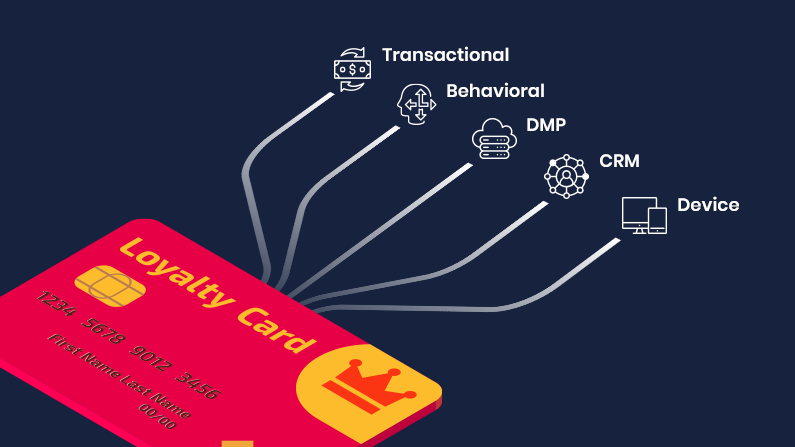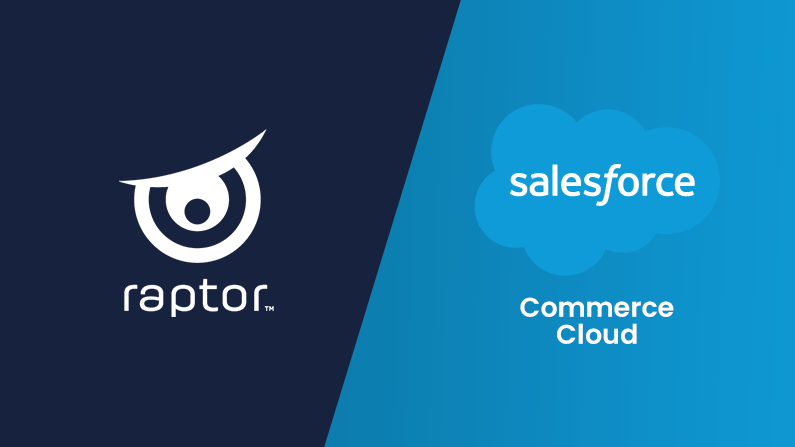Customer Lifetime Model (CLV) - How to predict your best customers
Mar 25, 2022 | Customer Data Platform, AI

Want to know whom of your customers are most likely to churn? Who is likely to buy the most from you in the future, and who will stay “alive” and loyal with your current marketing efforts?
Of course, you do! Who wouldn’t want the specific intel on each customer as this is a direct path to empowering your business from within, increasing sales, and promoting relationships with loyal customers? All from a deep dive into the complexity of your customer data.
It’s a look into the crystal ball. A straight prediction of your customers' future activities.
Raptor Services are proud to release our Customer Lifetime Value Model (CLV) – a powerful tool to help you analyze the behavior of your customers to narrow your focus on those customers proven most valuable to your business. The CLV is the first in a series of models, named AI models, which will be released in the upcoming months.
Want to talk to us straight away?
Book a meeting with one of our CLV consultants
The purpose of a Customer Lifetime Value Model (CLV)
With the release, you don’t need to be a data scientist to measure the lifetime value of your customers, now it’s possible for everyone working in the Customer Data Platform to analyze which of your customers are profitable to your marketing campaigns.
The CLV includes 12 powerful KPIs (found at the bottom of the page) proven valuable to your business. Here are a few examples:
1. A Prediction of personal, future, and historical value which makes it possible to spot customers with high buying potential
2. A calculation of Churn risk enabling you to reach out to customers who are at high risk of leaving
3. An Inactivity Score that tells you if a customer is about to exceed his personal average number of days between orders. This allows you to reach out and activate them sooner to lower the days between orders.
81% of marketers claim that monitoring CLV boost sales
- Criteo survey
What is a Customer Lifetime Value Model (CLV)?
Customer Lifetime Value is a prediction of the value a customer can bring to your business. It’s also direct access to understanding your customers' intentions from past behavior.
Moving away from speculations or subjective gut feelings about what might perform well and which of your customers might be most profitable, the CLV is an analytical tool that transforms your gut feeling into actual data points.
Want to know which audiences truly perform? Get the Top 12 data-driven audiences that you can't live without as a marketer
One of the key reasons for measuring Customer Lifetime value is customer retention. According to Marketing Metrics the likelihood of selling to a new customer is 5-20%, whereas selling to an existing customer is around 60-70%.
From predictive scoring one of our customers could calculate that people who would shop 3 times within the first year were likely to return and buy in the second year. A customer who only shops online will usually buy from their webshop twice a year, whereas a customer who both shops online and in one of their stores, will return 6 times a year.
With Raptor’s CLV you will benefit from customer data on a large scale and use this to define your audiences in the Customer Data Platform. The CLV model must be configured, validated, and trained to learn your data and the behavior of your customers.
The more data you have, the better predictions.
Raptors CLV will give you answers to questions such as:
- What is the average order value for a single customer?
- How much is my customer likely to spend in my webshop, or store, or both next year?
- What is a single customer likely to spend next year?
- What is the average lifetime value of each customer?
- What is the likelihood of a customer leaving my business?
- How many days have passed since a single customer’s first order?
- How many days have passed since a single customer’s last order?
- How many days usually pass between orders?
…. Any many other insights that will boost any activities you have across marketing and sales. Check out the full list at the bottom of the article.
All of these insights are critical metrics for any business that adopts a data-driven approach.
Not only does CLV improve sales as you direct your efforts to customers who are most prone to react, but it also boosts customer loyalty to a degree where you actively target relevant messages at the right time.
With the CLV it was possible for one of our customers to calculate exactly when they should start marketing offers to people who hadn't engaged with their brand for a while. They would send reminders, new offers, vouchers, etc. via e-mail campaigns and SMS to keep them "alive". All from having data about customers' predicted behavior.
How is CLV calculated?
Raptor's CLV, which stands on the shoulders of years of research by leading CLV researchers, can benefit from data on customers’ behavior from all their entry points. Data such as website, social media channels, app, google ads, etc.
CLV is equal to the historic value + "predicted future value"
"Predicted future value" is the product of the predicted "average order value" and the "predicted number of future orders".
The "predicted number of future orders" is calculated by the AI model. When a customer is alive, he is expected to place orders with a frequency following a certain distribution, and if he is churning, it is less likely that he will place new orders. So the number of future orders is a function of a shop-specific dropout rate, the probability of the customer returning, and the historic time between orders for each customer.
The predicted alive probability is the probability that the customer will place a new order at any time in the future. It is predicted by the model and is determined by the time since the last order, time since the first order, the number of historic orders, and the inactivity score.
The "inactivity score" is based on the ratio between the days since the last order and the average days between orders.

Where is the CLV activated?
Raptor Service’s Customer Lifetime Value will be available for CDP owners through the control panel. Find the CLV in the header menu under AI modules. The actual parameters for building audiences will be available in the Audience Builder.
The CLV will be available from the 25th of March. If you have any questions please contact our PS team who will assist you in any way they can.

List of Customer Lifetime Value attributes
As soon as the CLV model is activated, you will find the following list of attributes when you select the have-filter in the Audience Builder in the CDP.
- Predicted alive (%): Predicted alive represents the probability of the customer placing a new order at any time in the future. It is the opposite of churn, but churn can be calculated on the basis of predicted alive with this formula: Churn = 100 - 'Predicted Alive'
Predicted Alive is a prediction by the AI model. It is based on the number of orders (Frequency), days since last order (Recency), days since first order (Time), the personal "average days between orders" for the customer, and the drop out rate for the shop. The drop-out rate is an internal value predicted by the model. It is shop specific and represents the ability to keep customers coming back.
For example: If a customer has a predicted alive percentage of 75, her churn risk is 25 %.
- The historic value last 365 days: The sum of the value of all orders by the customer during the last 365 days.
- Historic value all time: The sum of the value of all orders by the customer
- The predicted future value next 365 days: The predicted value of the customer the next 365 days. It is based on the predicted number of orders next 365 days and the average order value.
- Predicted Customer Lifetime Value: The sum of historic value and future value for the next 365 days for the customer.
- Predicted number of orders next 365 days: This is a prediction by the AI model and tells you how many times a customer will place an order within the next 365 days. It is based on the customer's buy frequency and the predicted alive score.
- Days since first order: Number of days since the first order by the customer.
- Days since last order: Also known as recency. The number of days since the last order by the customer.
- The number of orders: Also known as frequency. The number of orders a customer has placed. Multiple items bought on the same day are aggregated into one order.
- Average order value: Also known as monetary value. The average value of the basket. It is equal to the total historic value for the customer divided by the number of orders the customer has placed. Multiple items bought on the same day are aggregated into one order.
- Average days between orders: This is the number of days between the first and last order divided by the number of purchases minus one.
For example, 3 orders in 100 days (first order on day 0, last order on day 100) equals 50 days between orders on average. - Inactivity score: Days since the customer placed her last order divided by the average days between orders for that customer. On the day a customer places an order, this score will be 0. Until the same customer buys again and has not reached her personal buying average, the inactivity score will be between 0 and 100. If she exceeds her personal buying average, the number will be more than 100.
For example: If a customer places an order every 10 days on average, but today it is 15 days since she placed her last order, the inactivity score will be 150.
Do you want to know more about our new Customer Lifetime Value Model?
|

|
Related Content
You might also like
For years, marketers have been promised “personalization at scale.” You’ve probably heard it...
Learn More
No reason to sugarcoat it. E-commerce is facing a lot of challenges right now. Chinese giants like...
Learn More
It’s a name that’s impossible to ignore. No matter how hard you try. TEMU. The Chinese giant has...
Learn More
Stakes are incredibly high in fashion. With a global market value of predicted to reach 1.2...
Learn More
Loyalty is key No matter what corner of e-commerce you’re in, everyone can agree on one thing:...
Learn More
Like lots of marketers, you may have been told to find a way to achieve the same (or maybe better!)...
Learn More
We are all feeling the crisis (or rather, a series of crises one after another). It affects our...
Learn More
In 2020, Google decided to phase out third-party cookies, and they recently added a final nail to...
Learn More
When you work in ecommerce, you know the traffic during Black Friday is certainly higher than...
Learn More
Is your brand using Salesforce Commerce Cloud? And are you wondering what your options are in terms...
Learn More
Let us show you what you can achieve with premium personalization


A Raptor expert can share more about the product and answer any questions you have.











